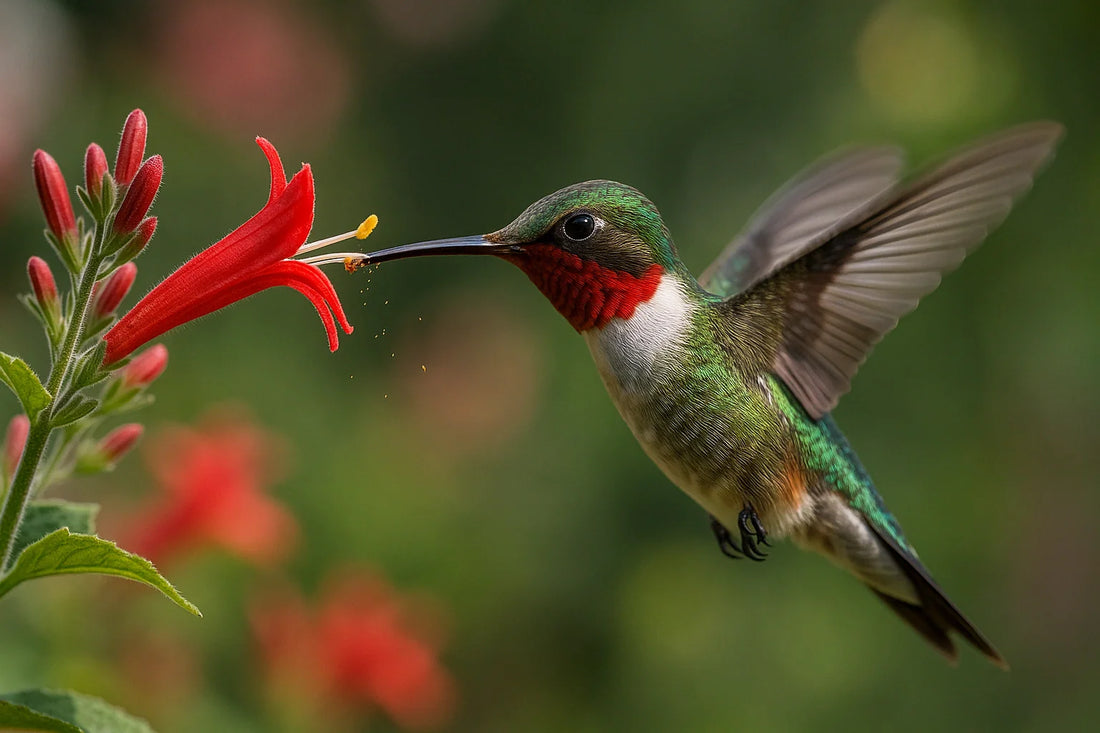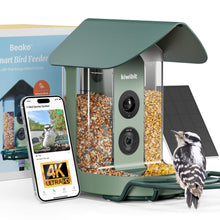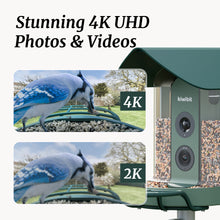Hummingbirds 101: A Readable, Expert Guide

Among all flying birds, hummingbirds feel like magicians. They can hover in place, fly backward, and visit hundreds of flowers a day while weighing only a few grams. This guide explains what hummingbirds are, how they hover, what they eat, where to see them in North America, and how to feed and protect them responsibly.
1) What Is a Hummingbird?
Hummingbirds (family Trochilidae) live only in the Americas. Scientists have described 360+ species, from the tiny bee-sized kinds to larger Andean specialists. Most share slim bills and extendable, grooved tongues for sipping nectar deep inside flowers. Common field marks include a very small body, a slender bill, a rapid “hum” in flight, and metallic iridescence on the throat or crown. Many species breed in spring and summer and migrate as days shorten.
2) How Do Hummingbirds Hover?
During hovering, the wings trace a sideways “figure-eight.” Lift is generated on both the downstroke and the upstroke, which lets the bird stay in place or move backward like a helicopter. Small species can beat their wings 50+ times per second. All of this runs on a high-octane metabolism: heart rates can exceed 1,000 beats per minute. To conserve energy overnight or on cold mornings, hummingbirds enter torpor, a temporary slowdown of body temperature and metabolism.
3) What Do They Eat?
Nectar supplies quick energy. Protein and micronutrients come from tiny insects and spiders such as aphids and midges. The tongue is forked and elastic; it flicks in and out rapidly to draw nectar with capillary and elastic recoil. Red or orange tubular flowers often co-evolved with hummingbirds, but color alone is not the whole story. Flower shape, abundance, and timing matter just as much.
4) Behavior and Migration
Hummingbirds have excellent spatial memory. They remember where rich flowers or feeders are and when they are likely to be replenished, then visit along regular circuits. Many individuals defend a good patch. Courtship may involve steep display dives and rapid chases. Long-distance migrants such as the Ruby-throated Hummingbird can cross the Gulf of Mexico in a single nonstop flight.
5) Where to See Hummingbirds in North America
| Species | How to Identify | Range and Season |
| Ruby-throated (Archilochus colubris) | Male with ruby-red throat; female with pale throat | Eastern and central U.S., common in spring–summer |
| Black-chinned (A. alexandri) | Black throat with a thin purple band | Southwest and interior West, spring–summer |
| Anna’s (Calypte anna) | Rose-pink crown and throat; sharp, buzzy call | Pacific Coast; many areas year-round |
| Rufous (Selasphorus rufus) | Rich rufous orange overall; long-distance migrant | West and Alaska; north in spring, south in fall |
| Broad-tailed (S. platycercus) | Male’s wingtips make a clear “ting” in flight | Rockies and high meadows, summer |
6) Responsible Feeding: Simple, Clean, Safe
Recipe and rotation Mix 1 part white granulated sugar to 4 parts water. Stir until dissolved. No dye, honey, brown sugar, or artificial sweeteners. In warm weather, change nectar daily or every 48 hours; scrub feeders at each refill. Periodically sanitize with a diluted bleach or vinegar rinse, then rinse thoroughly with water.
Placement and safety Hang feeders in light shade. Reduce window strikes by placing feeders either very close to windows (less than 1 m) with collision decals, or farther away. Use ant moats; choose bee/wasp guards if needed. Keep the area open so birds have clear escape routes.
Season timing Taper feeding as migration approaches in fall. If hummingbirds are still visiting, continue offering fresh nectar. Feeding does not prevent migration, which is triggered by day length and hormones.
7) Watching and Photographing
Activity peaks at dawn and late afternoon. Backlight or slight side light brings out iridescent throats without turning birds into silhouettes. Keep movements small and steady; use continuous shooting for better odds. Long-term notes on visit times, bloom cycles, and weather will quickly reveal patterns.
8) Conservation and Threats
Window collisions, pesticides, and habitat loss are the main risks. Use fewer lawn chemicals, plant native nectar sources, and add visible window markers. As climate change shifts bloom times and insect abundance, consistent community observations help scientists track impacts.
FAQ
Do hummingbirds prefer red flowers? They notice red well, but what truly matters are nectar availability, flower shape, and access. Do not add red dye to nectar.
Can I use honey or brown sugar? No. Honey and brown sugar spoil faster and can foster harmful microbes. Plain white sugar is safer and consistent.
Will feeding stop them from migrating? No. Migration follows daylight cues and internal physiology. Feeders simply provide reliable fuel along the way.
Why did my birds disappear? Changes in weather, flower availability, neighborhood gardens, or nesting behavior can shift traffic. Keep feeders clean, try multiple locations, and be patient.
How do I reduce bees and wasps? Use bee guards, keep the outside of the feeder dry and non-sticky, move feeders into light shade, and add an ant moat.



